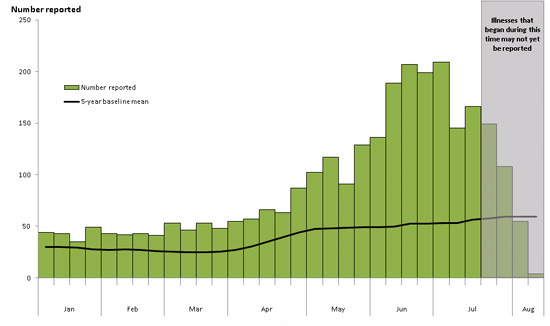Egg industry response to recalls (in translation)
How is the egg industry handling the recalls?
Yesterday, major newspapers ran a full-page ad from “America’s Egg Farmers” (I saw it in USA Today and in the New York Times). The ad displays an egg and text on a white background, nothing more.
The text is spare and notable more for what it does not say than for what it does. Here it is, with my translations in red italics.
A message from America’s Egg Farmers. We want you to think that we are down home farmers of small flocks of hens in a lovely bucolic settings. We think this sounds better than “A message from egg agribusiness.”
You’ve probably heard about the recent egg recall. We wish you hadn’t.
As egg farmers, we’re concerned, and continue to work closely with the FDA and USDA to help ensure the safest and highest quality eggs possible. We don’t have to take any responsibility for this mess. We will let the FDA and USDA deal it.
The potentially affected eggs, which make up less than 1% of all US eggs, have been removed from store shelves. Whew. The problem is solved. We don’t need to do another thing except work on public relations.
You may be wondering if eggs are safe to eat. We wish you would just forget about this.
Yes, they are. Fingers crossed!
Thoroughly cooked eggs are thoroughly safe eggs, according to the Center for Disease control and the FDA. Eggs should be cooked until the whites and yolks are firm. We know we are producing unsafe eggs. It’s not our fault if you don’t know how to cook them.
To find out more information on this recall and the safe handling of eggs, please visit eggsafety.org. When you do, we will tell you how safe our eggs are and how well we treat our hens, and invite you to watch an FDA video on how to cook eggs properly.
And remember, thoroughly cooked means thoroughly safe. It’s not our fault if you don’t listen.
I think the egg industry has a lot to answer for. It needs to do better than this. OK egg industry, how about placing an ad that says something like this:
- We are devastated that this happened and our hearts go out to everyone who became ill and to their families.
- We are taking every step to make sure that this never happens again.
- We are deeply sorry that our industry did not voluntarily adopt safety procedures years ago, especially when the FDA first proposed egg safety rules in 2004.
- We take full responsibility as an industry for the failure of one of our members to obey the law.
- We will do everything possible to make sure that the victims of this incident are fully compensated for their medical costs and losses.
- We fully support food safety legislation and urge the Senate to pass S.510 immediately. It will give the FDA the tools it needs to do its job and help us produce eggs under the safest possible conditions.
- We apologize to the American public that our eggs are not safe enough and that we have not worked hard enough to make sure that they are safe.
I can dream, can’t I?



